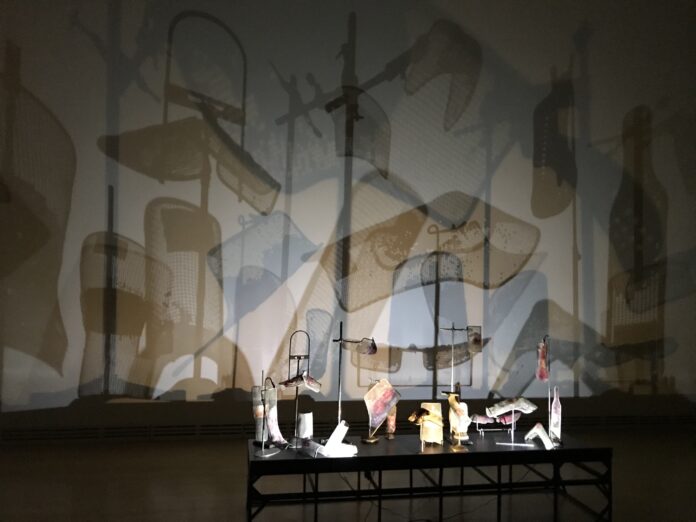
The Baroness Elsa Project weaves a complicated web of 20th and 21st century social commentaries into an experience that promotes positive self-reflection, so long as its audience can see past any preconceptions held about what art is.
Open from Sept. 28 to Dec. 12, the exhibit is available on the lower floor of the Carleton University Art Gallery (CUAG).
Baroness Elsa von Freytag-Loringhoven’s poems, found art and photographs are the main showcase of the exhibit. These are followed by various modern artworks by other featured contemporary artists that link issues of both eras.
Enduring Ornament, created in 1913, is the first piece displayed in the exhibit by von Freytag-Loringhoven. The lone metal ring, which she originally found in the streets of New York on her way to get married, seems pretentious in its simplicity at first. It confused me since it didn’t look like it belonged in a gallery.
But the context of von Freytag-Loringhoven’s life injects meaning into the object that opens the exhibit’s major themes, namely gender and material wealth.
Large enough in diameter to fit around a wrist, the size of the ring calls to mind the image of handcuffs, which questions whether marriage was a choice or a necessity for 20th century women. The strength of the material and its circular shape allude to the strength and constant dedication of women fighting for their rights throughout the 20th century.
Enduring Ornament feels out of place because it is an example of Dadaism, an artistic movement from the early 20th century which claimed that anything an artist calls art is considered art. Marcel Duchamp’s Fountain, created in 1917, is an infamous Dadaist piece of art and despite the creation of Enduring Ornament around the same time, it is not nearly as well-known.
Early in the exhibit, the viewer’s attention is called to the historic underrepresentation of women’s contributions to society. Enduring Ornament suggests that the viewer keeps this theme in mind for the rest of their visit.
Although von Freytag-Loringhoven’s baroness title may give the impression of wealth, she was anything but rich. She disliked the idea of being wealthy and instead practiced art for the sake of fulfilling the soul, according to the exhibit.
The beauty of the ring is found in its emotional symbolism as a link between lovers rather than in its material value as a precious, expensive object. According to this piece of art, the emotional investment people have in a material is more valuable than the material itself.
Enduring Ornament sets a precedent of nuanced and profound commentary that the rest of the exhibit continues to deliver on. Each art installation introduces new perspectives to the issues at hand, from von Freytag-Loringhoven’s poems with inverted words and chaotic doodles, to Wit López’s Red Yellow Green Purple that projects a video onto a cotton quilt and acrylic yarn screen.
One of the last pieces in the exhibit is Dana Claxton’s Headdress series, created more recently between 2018 and 2019. This series reflects von Freytag-Loringhoven’s ideas about gender and material wealth through a modern Indigenous lens. The photographs feature Indigenous women covered in colourful headdresses and culturally significant beaded designs.
The hidden faces of the photographed women echo von Freytag-Loringhoven’s commentaries about the lack of recognition of women’s accomplishments in society and the beaded designs extend this idea to the recognition of Indigenous peoples in Canada.
The prominence of the headdresses reflects Canada’s history of valuing Indigenous peoples’ artifacts while ignoring the inputs of Indigenous peoples. The range of bead colours makes them stand out against the backgrounds, exaggerating the headdresses’ importance to the viewer and implicating them in the same oppressive behaviour.
The Headdress series confronts the viewer with a face-to-face standoff of those affected by the relevant social issues. In turn, viewers are led into thinking about their role in perpetuating these behaviours. This ends the exhibit with a powerful, introspective message.
The two pieces explored in this review provide only a small glimpse of the web of social issues addressed by the entire exhibit. The way von Freytag-Loringhoven’s art contrasts against the art of the other featured modern artists is unique, inspiring, and at times, strikingly accurate. The exhibit is well worth visiting for a firsthand experience.
A previous version of this article referenced Baroness Elsa von Freytag-Loringhoven’s artwork as the Enduring Ring. In fact, the piece is titled the Enduring Ornament. The article was last updated on Oct. 15.
Featured image provided by Cindy Stelmackowich.



